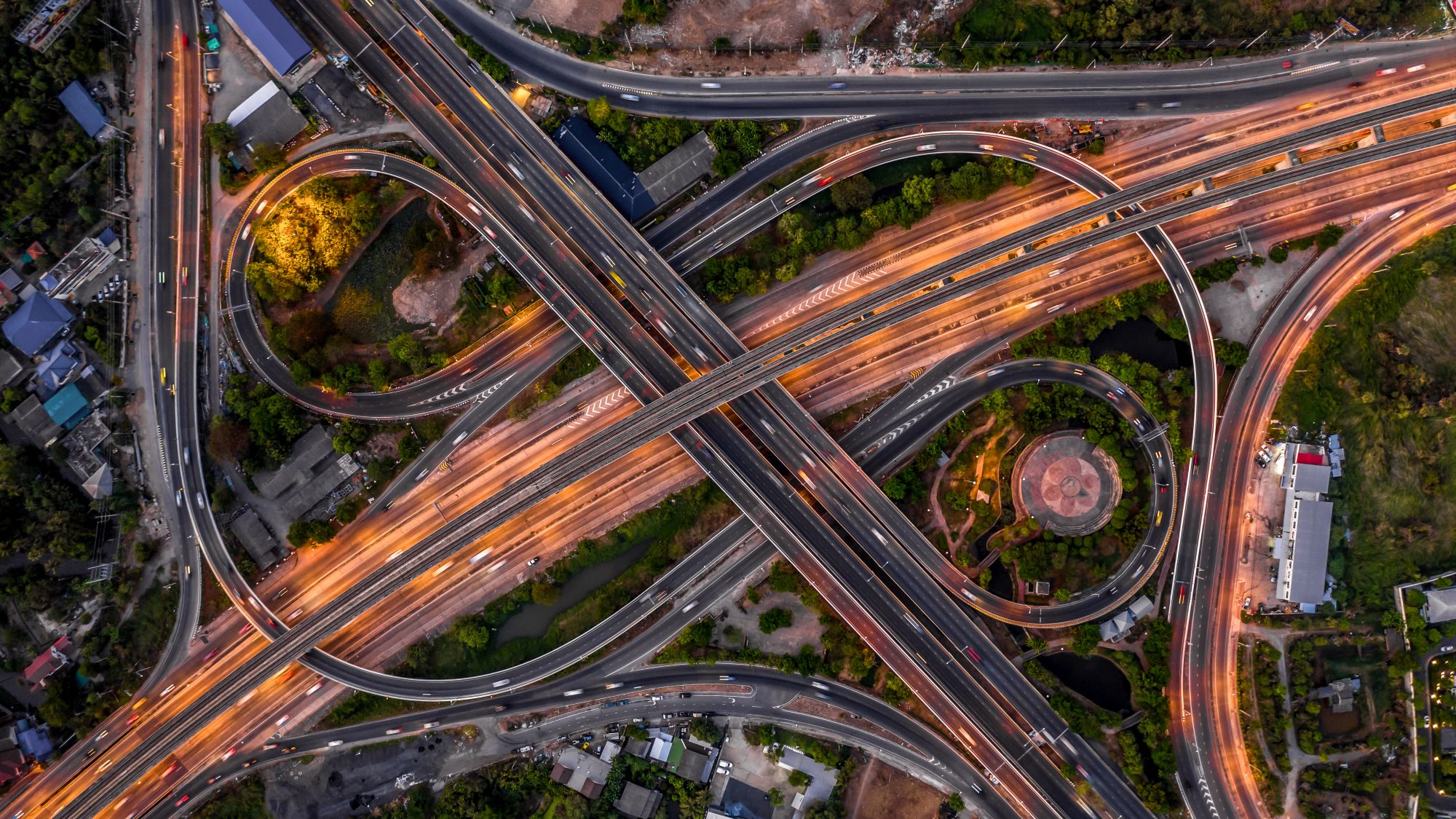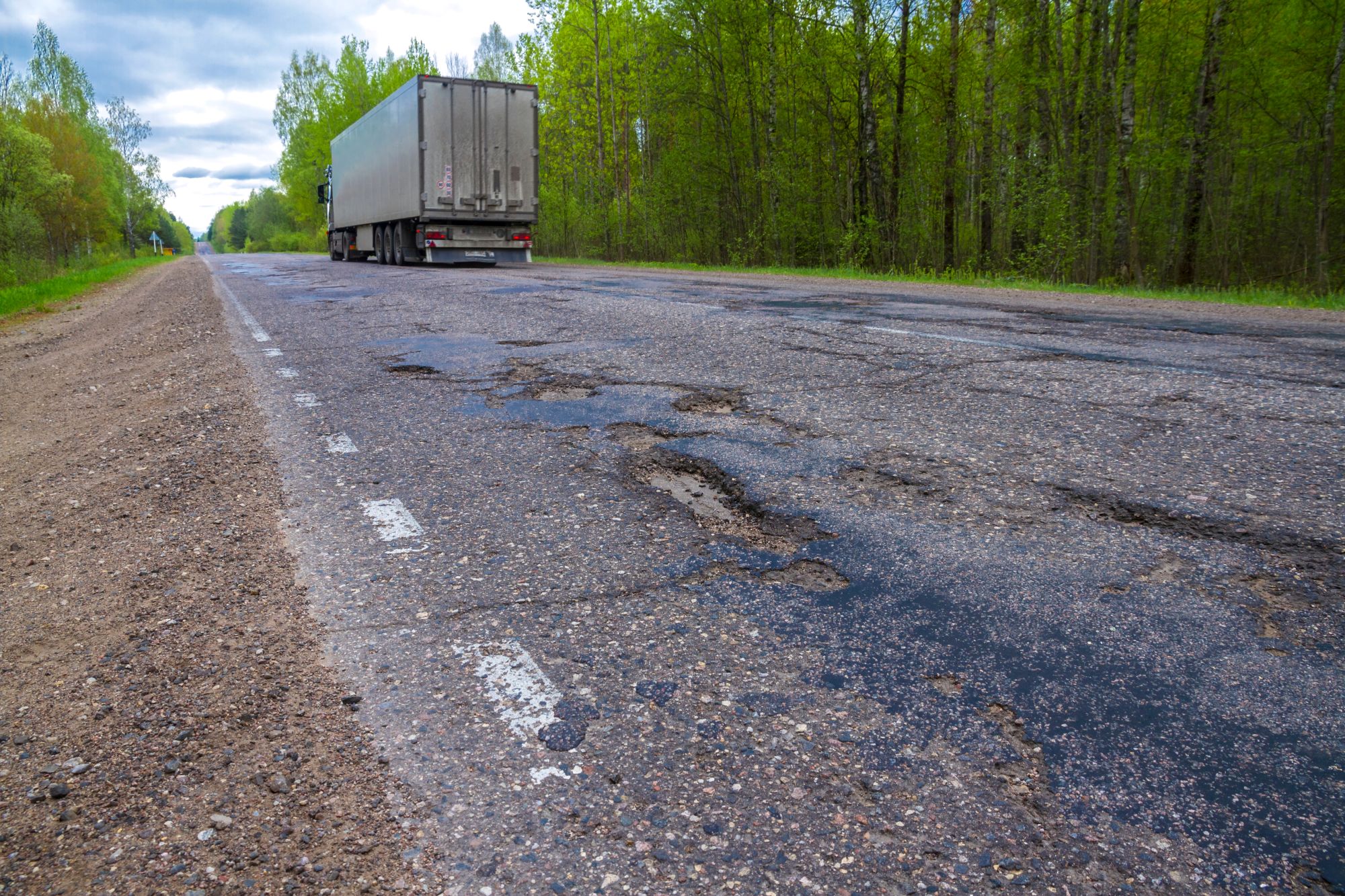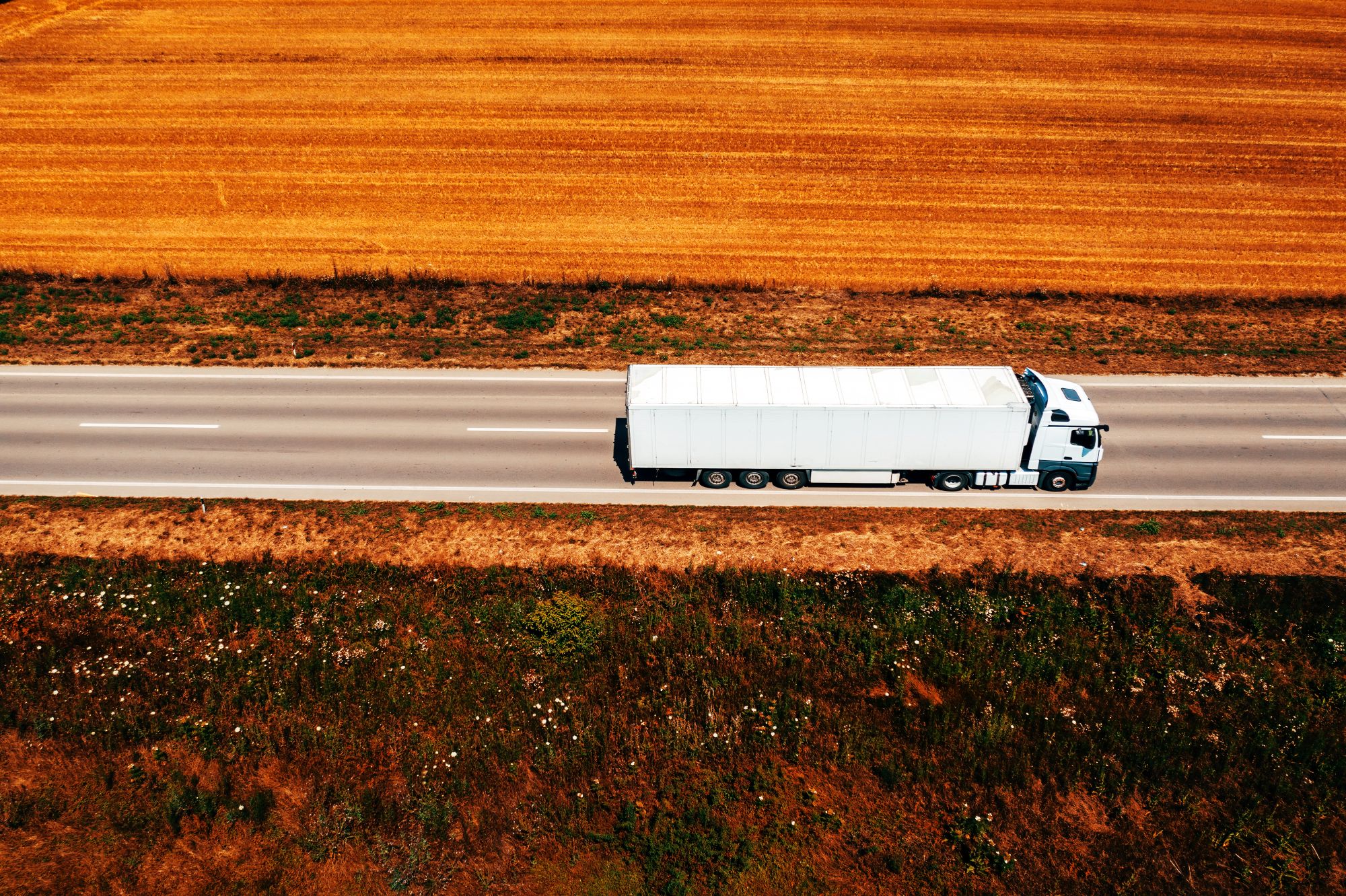
Guest
Como é que o financiamento de infra-estruturas no Reino Unido poderá ter impacto no sector da mobilidade
Criado: 02/07/2025
•
Atualizado: 03/07/2025
Após anos de investimentos irregulares e congestionamentos crescentes, o governo do Reino Unido comprometeu-se a investir mais de 700 mil milhões de libras em infra-estruturas ao longo da próxima década, grande parte das quais destinada às estradas do país. Desde novos corredores de transporte de mercadorias a sistemas de tráfego digitais de ponta, o impacto da Estratégia de Infra-estruturas a 10 anos nos condutores comerciais e no sector da mobilidade em geral poderá ser transformador.
As estradas estão a atingir o ponto de rutura
As estradas são apenas uma parte do conjunto de transportes do Reino Unido - mas transportam a esmagadora maioria das mercadorias. [De acordo com dados do Governo] (https://assets.publishing.service.gov.uk/media/67dd4f03c6194abe97358bf6/dft-investment-management-srn-25-26.pdf#:~:text=create%20jobs%20and%20housing%20and,at%20the%20end%20of%20March), 81% das mercadorias nacionais e 75% das importações e exportações são transportadas por estrada, o que faz dela a espinha dorsal da logística e da economia do Reino Unido.
E, apesar de representar pouco mais de dois por cento da rede rodoviária do Reino Unido em comprimento, a [Rede Rodoviária Estratégica (SRN)] (https://https://nationalhighways.co.uk/media/u4apnjvk/nh-srn-simplified-map-2023.pdf) transporta 34% de todos os trajectos rodoviários - incluindo muitas das rotas de transporte de mercadorias mais sensíveis ao tempo e de maior volume. Para os condutores que as utilizam, o seu estado e capacidade têm um impacto direto na segurança, eficiência e desempenho das entregas.
No entanto, os dados do [Índice de Condição das Estradas (RCI)] (https://www.asphaltuk.org/wp-content/uploads/ALARM-survey-2025-executive-summary.pdf) mostram que cerca de 24.500 milhas - mais de uma em cada 10 milhas - da rede em Inglaterra e no País de Gales é suscetível de necessitar de manutenção nos próximos 12 meses.
Uma série de recentes encerramentos de emergência de pontes expôs ainda mais a vulnerabilidade da rede. Em algumas áreas, as estruturas de suporte fissuradas e o betão com décadas de idade criaram condições perigosas para todos os utentes da estrada - especialmente para os veículos pesados de mercadorias, que são frequentemente os primeiros a enfrentar restrições de peso ou desvios forçados.
O governo respondeu com um novo fundo de mil milhões de libras para reparar e reconstruir pontes, cruzamentos e viadutos em mau estado, como parte da sua estratégia de infra-estruturas. É um passo bem-vindo - e que reflecte a crescente pressão do sector. Para os condutores profissionais, pode significar menos desvios, menos restrições súbitas e menos tempo perdido em infra-estruturas que não se adequam à logística moderna.
Mas a segurança não consiste apenas em evitar falhas catastróficas. É também uma questão de resiliência a longo prazo - assegurar que as estradas, pontes e bermas são mantidas corretamente antes de se tornarem um perigo. Este foco renovado na manutenção indica que a conservação das estradas pode finalmente começar a corresponder à escala, dimensão e velocidade dos veículos que delas dependem.

O problema dos buracos
Embora os projectos de grande visibilidade dominem os anúncios, é frequentemente o estado diário da superfície da estrada que tem o maior impacto nos condutores. Para quem trabalha com transportes, os buracos são mais do que um incómodo - são um perigo persistente para a segurança e um encargo dispendioso.
A exposição repetida a superfícies irregulares aumenta o desgaste dos veículos pesados de mercadorias, danifica os pneus e a suspensão e contribui para a fadiga do condutor. Em alguns casos, os danos causados pelos buracos obrigaram os veículos a sair da estrada para reparações de emergência, perturbando as entregas e afectando os acordos de nível de serviço.
Para os condutores, os riscos são pessoais. Tentar evitar os buracos - especialmente em estradas estreitas ou movimentadas - pode levar a manobras perigosas. Se a isto juntarmos o mau tempo, a iluminação limitada ou os prazos de entrega apertados, os riscos aumentam.
Como parte do seu impulso mais vasto em matéria de infra-estruturas, o governo atribuiu[ £1,6 mil milhões] (https://www.gov.uk/government/news/pm-tells-councils-to-prove-action-on-pothole-plague-to-unlock-extra-cash-and-reveals-48bn-for-major-roads) como parte do Plano para a Mudança para melhorar as infra-estruturas locais, incluindo buracos, superfícies fissuradas e faixas de rodagem desgastadas. O objetivo é elevar o nível de segurança e fiabilidade das estradas, em especial nas vias de tráfego intenso de mercadorias.
Não resolverá o problema de um dia para o outro, mas marca uma mudança de prioridades - reconhecendo que o bem-estar dos condutores começa com o básico e que uma viagem segura e confortável depende de estradas bem conservadas.
Para as frotas, as vantagens incluem menos reparações não planeadas, menos pedidos de seguro e menos tempo de inatividade dos condutores. Para os condutores, significa menos solavancos, menos stress e menos uma coisa com que se preocupar num turno longo.
Uma rede fiável
O bem-estar dos motoristas está no centro das atenções dos transportes modernos. As longas horas de trabalho, os atrasos nos horários e as instalações inadequadas têm tido o seu preço. Mas os últimos planos do governo oferecem esperança para uma rede mais segura e com melhores ligações.
Em todo o Reino Unido, as instalações para motoristas têm tido dificuldade em acompanhar a procura. O estacionamento é muitas vezes limitado, os serviços estão sobrecarregados e muitas áreas de repouso carecem de conforto e segurança - especialmente para operações de longo curso. É por isso que o governo também está a [melhorar o ambiente de condução] (https://www.gov.uk/government/news/more-than-14-million-in-joint-government-and-industry-funding-to-boost-innovation-and-working-conditions-in-freight): mais estacionamento seguro, melhores instalações de bem-estar e reformas de planeamento para acelerar o desenvolvimento de novos locais.
Ao mesmo tempo, o investimento em centros de carregamento e reabastecimento para camiões eléctricos e a hidrogénio está a acelerar. A Moto, por exemplo, comprometeu-se a instalar mais de 300 carregadores eléctricos para veículos pesados de mercadorias em 23 locais de autoestrada, enquanto a paragem de camiões de Ashford está a ser transformada num importante centro de carregamento para o transporte de mercadorias através do Canal da Mancha. Estas instalações não se destinam apenas a manter os veículos em movimento - destinam-se a proporcionar aos condutores locais seguros e bem equipados para descansarem e recarregarem as baterias.
Se os seus condutores estiverem à procura de um local seguro para parar, a nossa aplicação intruck permite-lhes identificar e reservar paragens de descanso em todo o Reino Unido e na Europa. [Saiba mais e descarregue-a aqui.] (https://intruckapp.com/)

O custo do congestionamento
Os engarrafamentos, as rotas imprevisíveis e a pressão para cumprir os prazos de entrega contribuem para o stress e a fadiga dos condutores - e tornam a estrada um local mais perigoso.
As grandes actualizações de infra-estruturas, como a travessia inferior do Tamisa, a duplicação da A66 e as melhorias na M60 Simister Island, destinam-se a reduzir o congestionamento e os riscos de acidentes em alguns dos pontos de estrangulamento mais conhecidos do Reino Unido.
Além disso, continua a haver um impulso para a introdução de ferramentas digitais que apoiem viagens mais seguras e suaves. Os alertas de tráfego em tempo real, os sistemas de deteção inteligentes e uma melhor gestão do tráfego ajudarão os gestores de frotas e os condutores a reagir rapidamente às perturbações e a mudar de rota quando necessário.
O [programa Estradas Digitais das Auto-Estradas Nacionais] (https://nationalhighways.co.uk/our-work/digital-data-and-technology/digital-roads/) já está a lançar as bases, com infra-estruturas inteligentes que podem detetar perigos mais cedo, gerir fluxos de tráfego de forma mais inteligente e comunicar actualizações mais claras e em tempo real.
O que é que isto significa para a mobilidade?
Um passo em frente para a mobilidade e o bem-estar dos condutores. O esforço nacional coordenado para resolver o atraso das infra-estruturas do Reino Unido e para modernizar as estradas de uma forma que beneficie os condutores que mais dependem delas.
O verdadeiro teste será a concretização. Para transformar o financiamento em melhorias tangíveis, será necessário ouvir os condutores, aprender com a experiência da linha da frente e medir o sucesso pela forma como as estradas são sentidas - e não apenas pelo seu custo.
"Esta nova vaga de investimento não tem apenas a ver com a redução dos tempos de viagem", afirma Stuart Willetts, Diretor de Desenvolvimento Comercial do Reino Unido, na SNAP. "Trata-se de construir uma rede de transportes que apoie o bem-estar dos condutores, a eficiência operacional e a transição para a mobilidade limpa. Mal podemos esperar para ver os resultados."
Quer ver como a mobilidade está a evoluir no local onde se encontra?
Utilize o mapa SNAP para encontrar serviços e soluções perto de si - independentemente da estrada em que se encontra.



